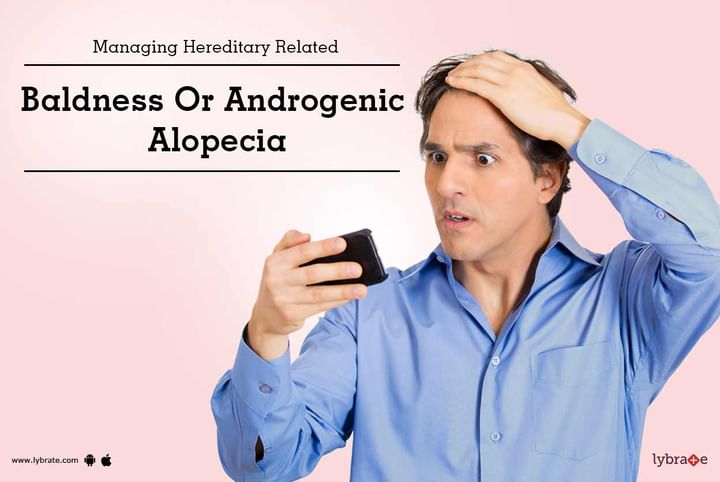Managing Hereditary Related Baldness Or Androgenic Alopecia
Hair loss is a common problem affecting a vast majority of the population. A receding hairline may not always be an outcome of pollution, unhealthy lifestyle or lack of proper hair care. Hair loss can also be a hereditary trait. Of late, hereditary related baldness (in males and females) is on an exponential rise. The problem is no longer related to old age. You will come across many young men and women (below 30) suffering from hereditary linked progressive baldness. The condition can, however, be postponed and managed if diagnosed and treated at an early stage.
On an average, a person loses between 50-100 (150 in some cases) hair strands per day. As part of a normal growth cycle of the hair, new strands of hair replaces the hair that you lose. In hereditary related baldness, also known as Androgenic Alopecia, the hair loss is at an alarming rate with little or no hair growth. The problem may be a male pattern baldness or a female pattern baldness (Androgenic Alopecia in males and females respectively).
In female pattern baldness, the hair in the front mostly remains unaffected. It is the hair on the crown of the head that starts thinning progressively.
In male pattern baldness, the hair thinning starts at the hairline. Soon, bald patches appear on the crown of the head.
Unlike in males, these bald spots seldom appear in females.
Managing Androgenic Alopecia
In Androgenic Alopecia, the male hormone, dihydrotestosterone (DHT) is present in elevated amounts. DHT often interferes with the growth cycle of the hair, thereby shortening it. The follicles of the hair also grow shorter than usual. As a result, the hair may become short and thin, losing its natural shine and color.
Treatments and medications are available to treat androgenic alopecia.
- Propecia (Finasteride) is used to treat androgenic alopecia in men. The prescription drug inhibits the conversion of testosterone to dihydrotestosterone. In the absence of the hormone Dihydrotestosterone, the hair growth follows the normal cycle, thereby arresting the hair fall and other associated symptoms considerably.
- The Minoxidil Topical Lotion comes in handy in case of hair loss from the scalp (mainly back and top of the scalp). Effective for both men and women, the lotion should, however, be avoided by pregnant and lactating women. Minoxidil lotion arrests the progressive balding, thereby preventing further deterioration. However, there may not be a 100% hair growth. Minoxidil in tablet form is often used to treat high HP. Thus, the medication should never be used without consulting the doctor. Make sure that your scalp is dry before applying the lotion (usually twice a day). One should be patient with Finasteride and Minoxidil lotion as the medications may take time (up to 4 months) to produce the desired results.
- One can also opt for Hair Transplantation to camouflage the bald patches and hair thinning. However, get the procedure done only by an expert surgeon.
- In addition to these medications, take care of your diet. Replenish the diet with foods rich in proteins, vitamins, and minerals (eggs, walnuts, almonds, salmon, spinach, avocado, blueberry, guava, apple, orange, papaya, oats, to name a few.)
In case you have a concern or query you can always consult an expert & get answers to your questions!



+1.svg)
